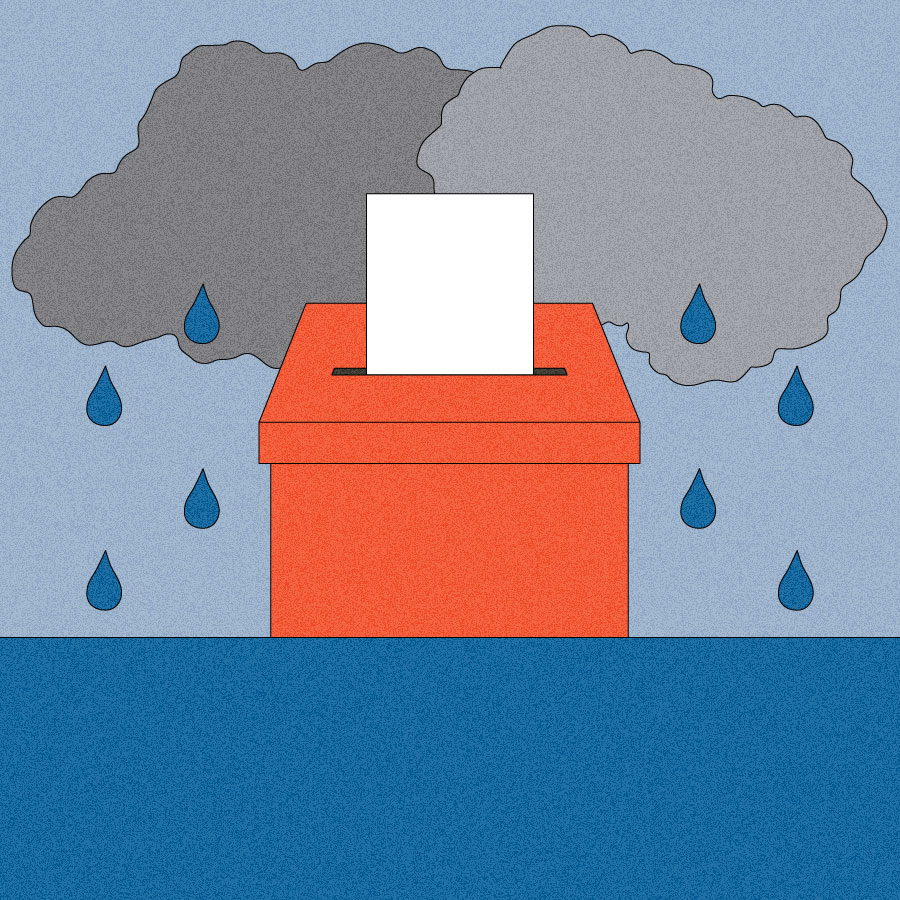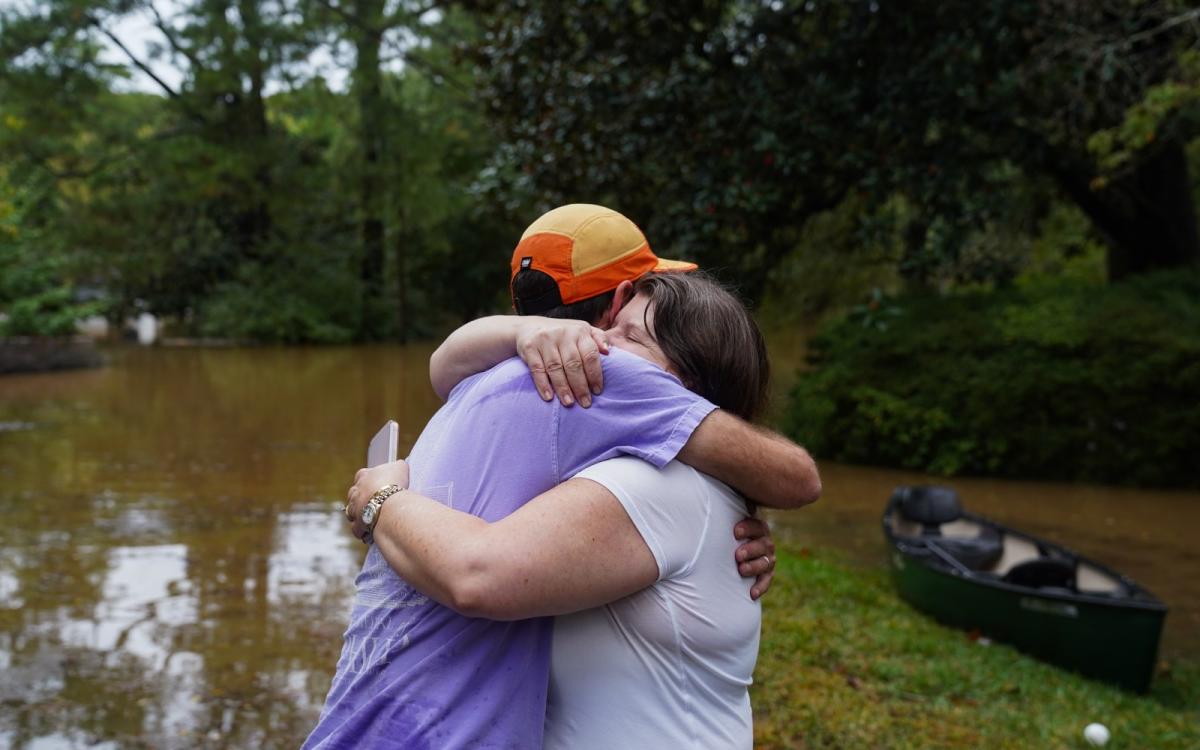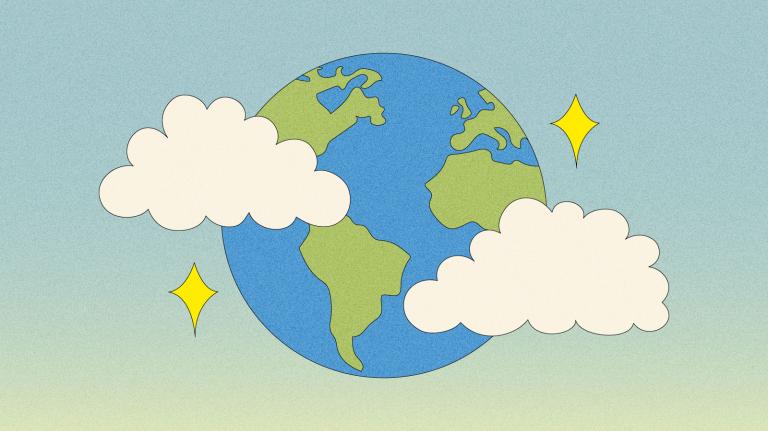
The vision
“We’re entering this new normal of what we’re going to be experiencing under climate change.”
— Michelle Meyer, director of the Hazard Reduction and
Recovery Center at Texas A&M University
The spotlight
Hey there, Looking Forward fam. This week, the Grist team has been laser focused on the devastation of Hurricane Helene. (If you’re reading this newsletter in the Southeastern U.S., or you have loved ones there, our thoughts are with you.) The unusually strong and wide storm has caused deadly flooding across six states, ravaged small, rural towns — and, particularly in North Carolina, it has disrupted mail service and damaged voting locations, calling residents’ ability to exercise their civic duty into question.
While Helene has been a historic storm, and has even been described as the Katrina of 2024, it isn’t the only extreme weather event that has caused havoc this year. As the consequences of climate change worsen, more and more communities are feeling the effects of heat waves, storms, floods, and fires. In a July poll from the Pew Research Center, 7 in 10 Americans reported having experienced an extreme weather event in the past 12 months. And in the midst of disaster season, we are also nearing the climax of an already chaotic election cycle.
In preparation for these realities, in August, Grist writer Jake Bittle and Senior Manager of Community Engagement Lyndsey Gilpin compiled a guide on voting after a disaster — covering things like where to find contact information for your local election office, what to do if your polling place has been damaged, and what types of special accommodations might be offered if voters are impeded by a disaster.
They designed the voting guide, and a second one offering general disaster preparedness advice, to be concise and easily skimmable, offering a few examples of different types of situations, and where to look for more specific, local information.
“For me and for a lot of journalists, we try to be clear in our writing, and accessible, but I don’t think it’s always people’s first-order priority,” Bittle said. “We write about really nuanced topics at Grist. We cite scientific papers, we write narrative — this is not that. So I had to be like, ‘Put yourself in the shoes of, What if I was in my car on 5 percent battery and needed to figure out what website I needed to go to? How would I want that written?’”
Now that both guides have been published, Gilpin’s goal is to make sure they reach anyone who might need them — now or in the future. “We already have a basic guide that we can add to or personalize or customize for whatever location,” possibly in the form of a paper flyer or a social media post with a local partner, Gilpin said.
In North Carolina, where the hurricane’s devastation has been most severe, she is currently working with local media to disseminate information about disaster relief, recovery, and other needs.
Below, you’ll find Grist’s full voting-after-a-disaster guide, with key information about what to do if you find yourself facing down extreme weather that may impact your voting plans. It is not tailored to the voting disruptions caused by Hurricane Helene (though Bittle and Grist’s Zoya Teirstein have reported on that as well); rather, it serves as a general resource, no matter where in the U.S. you are.
You can also bookmark the guide here, for future reference — and please feel free to circulate it around to all your friends and fam.
— Claire Elise Thompson
![]()
In-person voting
If a disaster strikes, the governor can extend voting deadlines, allow ballots to be forwarded to a new address, allow local officials to change or add new polling places, or postpone municipal elections. Those rules are different depending on the state, and in the wake of a disaster that information may be hard to find.
The U.S. Vote Foundation has a tool to access your county election office’s contact information. These range by state; they’re typically county clerks, supervisors, auditors, boards of elections, or election commissions. You can try to contact these offices, but it’s not guaranteed they’ll be able to answer the questions. You can also ask voting rights groups in your area and watch local news for any changes or updates.
In the wake of a disaster, first confirm where you should be voting. Has your polling place been damaged or moved? If multiple locations are combined or election day volunteers are scarce post-disaster, be prepared to stand in long lines to vote. If you’re waiting in the heat, make sure to wear comfortable shoes and appropriate clothing (21 states prohibit campaign apparel, so keep that in mind), and bring water. Here are some other resources on heat waves.
Was your car damaged in a disaster? Need a ride to the polls? Some ride share services and public transit systems offer free rides on Election Day. Here’s more information.
Early voting
Most states, Washington D.C., Puerto Rico, Guam, and the U.S. Virgin Islands offer some form of early voting, which is voting in-person before the election anywhere from a few days to over a month early, according to the National Conference of State Legislatures. However, the hours, locations, and timing differ for each. Three states — Alabama, Mississippi ,and New Hampshire — do not allow early in-person voting.
Early in-person voting is a useful option if you’d like to avoid lines on election day or will be out of town. It’s also an option for people who live in a region of the country prone to natural disasters or have been recently hit by one. In-person voting on election day, which comes at the tail end of “danger season,” may not be a possibility or a priority. Go here to see the specific rules around early voting in your state.
Absentee ballots
Absentee voting is often called “mail-in voting” or “by-mail voting.” Every state offers this, but some require you to meet certain conditions, like having a valid excuse for why you can’t make it to the polls on election day. Absentee voting can be a particularly useful tool for people who have been recently displaced by extreme weather, or are at risk of being so. It also safeguards voters who live in the hottest parts of the country, where heat can make waiting in long lines dangerous.
The League of Women Voters explains absentee voting rules by state here. If you reside in a county that gets a federal disaster declaration after a disaster hits, there may be changes to these processes that can offer you more time and flexibility.
Since it’s the height of hurricane season, we’ve included the registration and absentee ballot request deadlines for hurricane-prone states below:
Florida: Registration deadline is October 7. If voting by mail, you must request an absentee ballot 12 days before the election, no later than 5 p.m. (more here).
Alabama: Registration deadline is 15 days before the election. If voting by mail, request a ballot five days before the election if you’re applying in person, or seven days before if you’re mailing your request (more here).
Mississippi: Mississippi does not have online registration. The deadline is October 7, 30 days before election day. The last day to request an absentee ballot is five days before election day (more here).
North Carolina: Voter registration deadline is 5 p.m. Friday, October 11, 2024. You must request an absentee ballot no later than a week before the election (more here).
South Carolina: Registration deadline is October 7, 30 days before the election. You must request an absentee ballot no later than 5:00 p.m. on the 11th day prior to the election (more here).
Louisiana: Online registration deadline is 20 days before election on October 15; in-person or mail is 30 days on October 7. Read the absentee ballot requirements here.
Georgia: Registration deadline is October 7, 30 days before the election. You can request an absentee ballot starting 11 weeks before the election (more here).
Texas: Registration deadline is October 7, 30 days before the election. If voting by mail, you must request an absentee ballot 11 days before the election (more here).
Voter ID laws
Each state has a different voter ID law. Some require photo identification, others require a document such as a utility bill, bank statement, or paycheck; some require a signature. The National Conference of State Legislatures has a breakdown of these rules here.
If your ID gets destroyed in a flood, fire, or tornado, your state may be able to exempt you from showing an ID at the polls. For instance, after Hurricane Harvey, Texas residents who lost their ID to floodwaters could vote without one if they filled out an affidavit stating that the voter didn’t have identification because of a natural disaster declared by the governor. Your state may also waive the fees associated with getting a new ID.
The best way to find this information out is to contact your county clerk or other election official, or contact a voting rights group in your area.
Know your rights
Just as there are strict rules in states around how people can cast ballots, there are also many others that dictate what happens outside of polling places. In most states, you can accept water and food from groups around election sites, but there is misinformation around whether or not it is legal. After the 2020 election, Georgia passed a law prohibiting this within a certain buffer zone. A judge struck down part of that law: there is no longer a ban on handing things to votes with 25 feet of them standing in line, but it’s still illegal to do so within 150 feet of the building where ballots are being cast.
Call or text 866-OUR-VOTE (866-687-8683) to report voter intimidation to the Election Protection Coalition. You can also find more information on voter rights from the ACLU.
— Lyndsey Gilpin & Jake Bittle
![]()
More exposure
- Read: a companion piece to the one above, offering general advice on preparing for and dealing with extreme weather (including how to navigate the various agencies that play a role in disaster aid)
- Read: more of Grist’s coverage of election season
- Read: more of Grist’s coverage of Hurricane Helene
- Read: a disaster glossary that Gilpin and others compiled at Southerly, a former community-driven media organization in the South that Gilpin founded
- Subscribe: to State of Emergency, a limited-run Grist newsletter exploring how climate change is impacting the political process
- Bookmark: if you’re looking for updates about Helene, or info about how to volunteer or donate, this is a great list of resources compiled by the North Carolina Inclusive Disaster Recovery Network
A parting shot
In the wake of Hurricane Helene, we’ve heard plenty of stories of local aid groups, first responders, and friends and neighbors stepping up to help each other in myriad ways — something we’ve written about in the past. In this heartwarming photo, Atlanta resident Dan Murphy hugs a colleague he rescued from their flooded home on a canoe.



